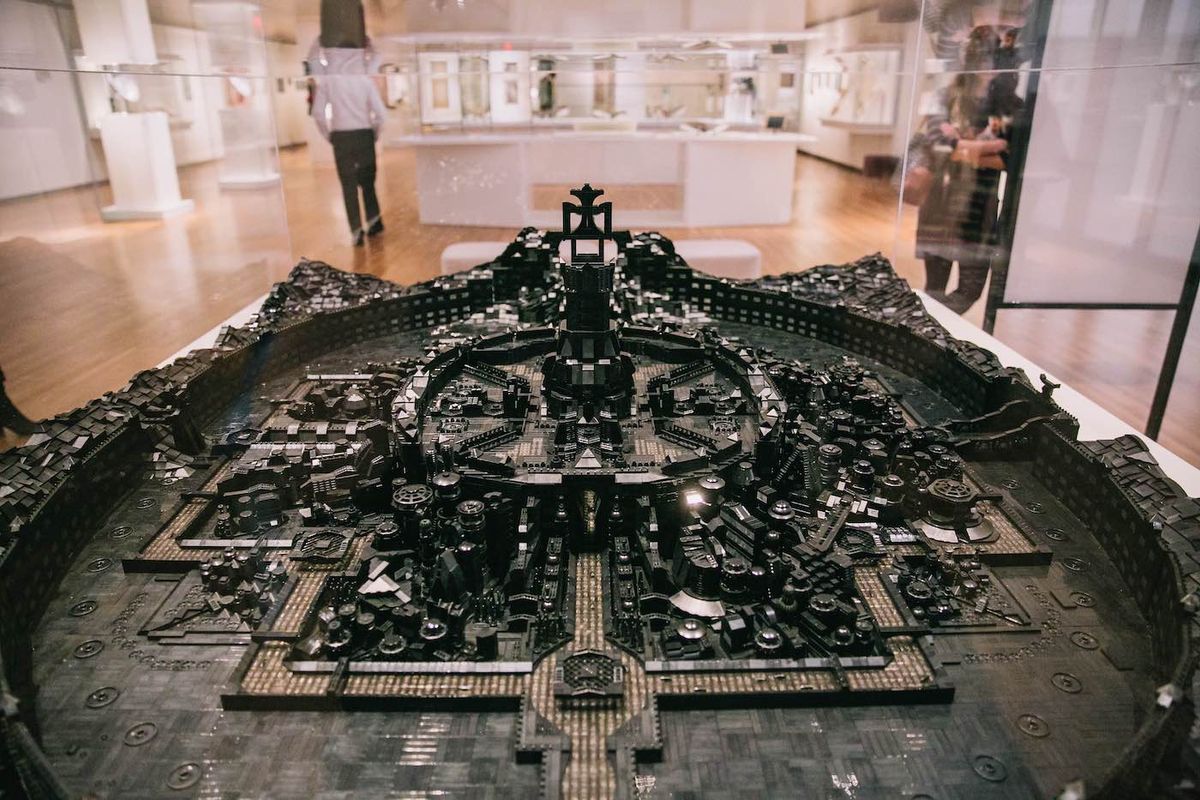The Aga Khan Museum in Toronto has acquired a colossal sculpture made from 100,000 pieces of Lego by the Ghanian-Canadian artist Ekow Nimako, who is known for his Afrofuturist reimaginings of Black histories built from Lego bricks.
The 30 sq-ft sculpture Kumbi Saleh 3020 CE (2019) conceptually envisions the ancient trading town in Mauritania one thousand years in the future, as a vast and complex metropolis once again. Kumbi Saleh was the centre of the trans-Saharan trade route at the height of the Ghana Empire, boosting cultural diffusion between Africa, the Middle East, Asia and Europe.
The work was the centrepiece of Nimako’s 2019 solo exhibition Building Black: Civilisations at the museum. It was commissioned as a response to the museum’s concurrent archaeological show Caravans of Gold, Fragments in Time, which explored ancient trades routes in the Sahara and their cross-cultural impact, including their role in the spread of Islam.
The acquisition “enhances the museum’s ability to tell global stories about the contributions of Muslim civilisations across time”, says the museum's curator, Michael Chagnon. And it boosts the institution’s other efforts to spotlight Islamic studies, like a newly launched podcast series exploring Muslim arts and culture.
“His being a Toronto-based artist was also critical to our decision,” Chagnon says. “The museum is a cultural hub for our neighbourhood and part of our work—and part of any museum’s work—must be to support local artists.”
Nimako says he turned his childhood hobby of building with Legos into a formal practice as a way to address the ancestral trauma that reverberates in contemporary Black culture. His Lego-built cityscapes evoke a “Blackness that is not constructed against the backdrop of enslavement, colonisation and violence”, the artist says.
The museum remains closed since last November due to the coronavirus pandemic, but it has a series of online offerings celebrating the contributions of Black artists during Black History Month, including a video in which Nimako delves into his varied influences and gives a behind-the-scenes look at his methodical process.


